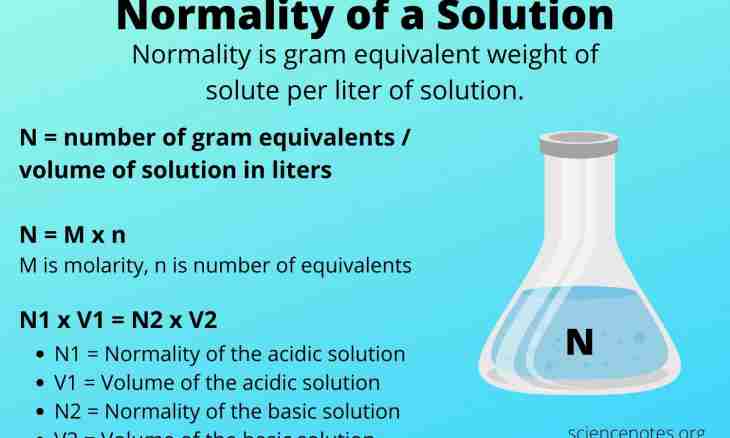The equivalent mass, or molar mass of an equivalent, the amount of substance interacting with one moths of hydrogen or forcing out as much hydrogen atoms from its connections is called. This size Mekv is designated, measured in g/mol and calculated on formulas or experimentally.
It is required to you
- - periodic system;
- - calculator;
- - chemical ware;
- - the diluted hydrochloric acid;
- - metal hinge plate.
Instruction
1. To find the equivalent mass of simple substance, use a formula: Mekv = Ma/B, where Mekv – the mass of an equivalent; Ma is the atomic mass of an element; B – valency. For example, according to a formula the equivalent mass of sodium will be equal in 22.99 g/mol, and bivalent sulfur – 32/2 = 16 g/mol, etc. For complex substances the molar mass of an equivalent will be called the amount of the substance which reacted without the rest with one equivalent of other substance, for example, of hydrogen.
2. Remember that calculation of this size for different chemical compounds has nuances. For example, at calculation of equivalent mass of oxides – put values of the equivalent masses which is connection. Zinc oxide is Let's say given. At first you consider Mekv (Zn) = 65/2 =32.5 g/mol. Then - Mekv (O) = 16/2 = 8 g/mol. Thus, receive the equivalent mass of ZnO equal of 40.5 g/mol. And it is possible to calculate the mass of an equivalent of acid, having divided its molecular weight into amount of the atoms of hydrogen which are contained in it: Mekv (H2SO4) = 98/2 = 49 g/mol, etc.
3. For experimental determination of equivalent weight at first repeat safety measures during the work with acids and gases. Then take the burette, a test tube and a funnel. Connect them among themselves rubber tubes. Pour the distilled water into the burette, by means of a funnel establish its level on zero.
4. In a test tube pour 5 ml of hydrochloric acid (try not to wet walls). On a dry wall place a metal hinge plate. You watch that it did not fall in acid ahead of time. Close a test tube a stopper and stir up. Hydrogen will force out water from the burette. After completion of reaction level water level in the burette and a funnel. Write down the end result, temperature and pressure when carrying out experience.
5. Determine the forced-out hydrogen volume, having compared initial and final water level in the burette. Lead the received result to normal conditions, using indications of a barometer and the thermometer. And then only calculate the mass of an equivalent of metal, using a formula: m (metal) / V (hydrogen at norms. conditions) = (Mekv.metal)/Vekv (hydrogen).

